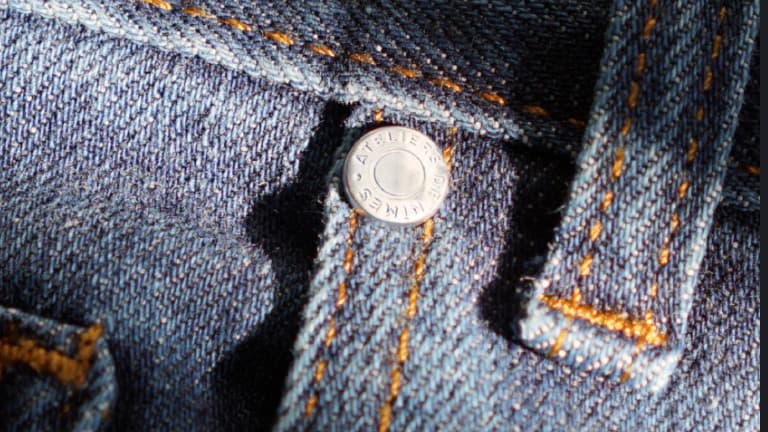Les Ateliers de Nîmes began producing denim canvas used to make jeans. A homecoming since, as its name suggests, the famous painting comes from the city of Gard.
While several French players have reintroduced the local production of jeans, the denim fabric used to make this fashion staple has not been made in France since the 19th century (see box). However, it is in France and in Nîmes (hence its name) that this know-how was born and allowed jeans to experience worldwide success in the 20th century.
But today, the hexagonal brand of jeans “The Nîmes workshops“decided to reintroduce in France the artisanal production of this particular canvas, whose real name is denim twill, that is an oblique weaving.
“We were taken for fools”, confides its founder Guillaume Sagot to BFM Business. “We have been working on this project since 2014 with the ambition of reintroducing this know-how, this local heritage in Nîmes, this know-how which has completely disappeared from the region”.
Retirees to the rescue
He and his two associates, Anthony Dubos and Clément Payen managed to buy three weaving machines for less than 50,000 euros (at the cost of long research).
“Two, museum pieces, are under renovation and one, more recent, is operational. The most complicated in fact was to find people who knew how to weave with these machines. I met retirees of the weaving industry in the region. Rhône-Alpes who helped us to put everything in place, to explain to me how it works. From now on, we are leaving the web “, continues Guillaume Sagot.
“We then work with family workshops in Portugal and Marseille. Here again, it is a complex know-how. We work with a Portuguese workshop because they master an ecological washing technique using ozone and biological enzymes “, explains the manager.
Until now, “Les Ateliers de Nîmes” made their jeans with Italian or Vosges canvas for an artisanal production of 3 to 4000 pieces per year. “For us, creating a brand without weaving the web was inconceivable” insists Guillaume Sagot. From September, jeans woven with in-house denim fabric will gradually replace those still in stock.
200 jeans sold each month
The brand intends to take advantage of this local added value to accelerate its sales, which are around 200 pieces per month. Especially since the use of a homemade canvas will only cause a “slight additional cost” on the price of the product sold between 75 and 180 euros.
What also seduce third-party distributors. If the brand has a physical store in Nîmes and obviously a commercial site, it is also sold in a dozen specialized stores in France as well as in Printemps and La Samaritaine …
A brief history of denim
Why did denim twill weaving leave Nîmes? Popularized by the André, a large Protestant family from Nîmes, the canvas was used to make fountains and casaquins for the local population. Silk and wool were replaced later by cotton, less expensive.
After the revocation of the Edict of Nantes by Louis XIV in 1685, many Protestants including the André family left the city and had to go into exile in Genoa or in England, thus exporting the canvas of Nîmes with them.
The industrial revolution in Great Britain then accelerated the production of denim across the Channel. Later a famous American trader, partner of a tailor (the famous Levi and Strauss), recovered a batch of canvas from Nimes (more comfortable than the tarpaulin they used), they put rivets on the pants and the ‘adapted to the tastes of American workers. Jeans were born.
–


